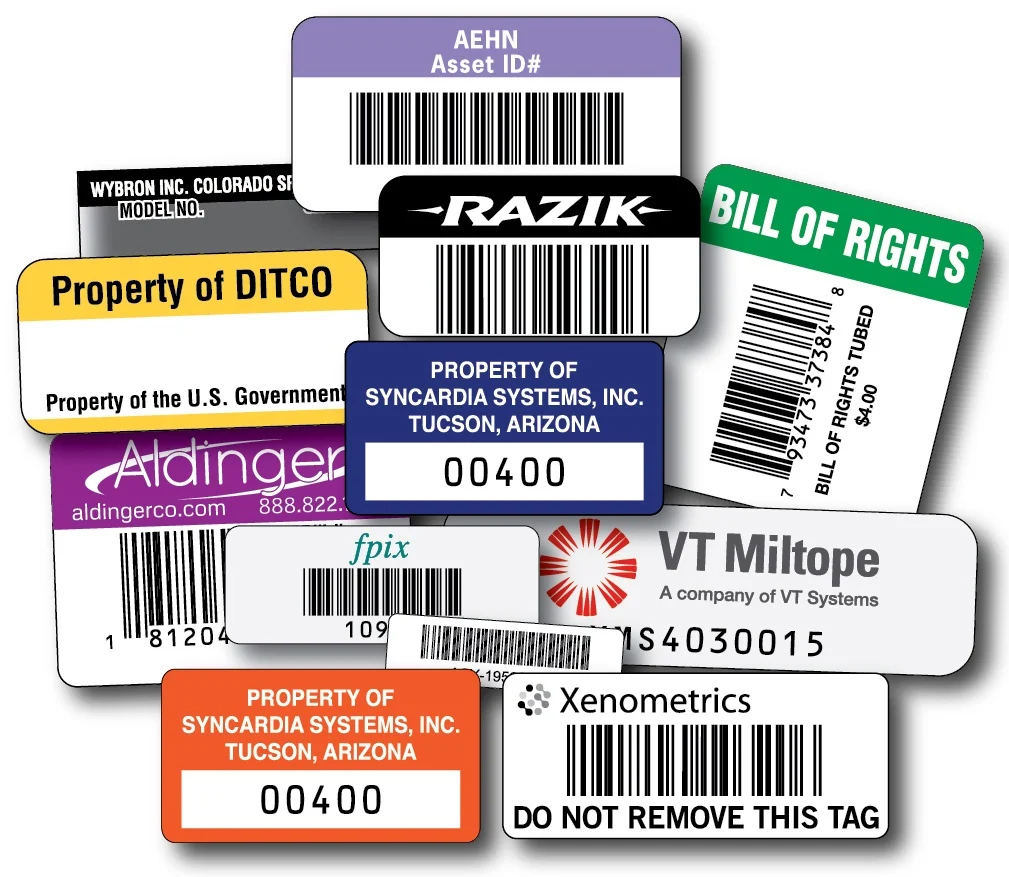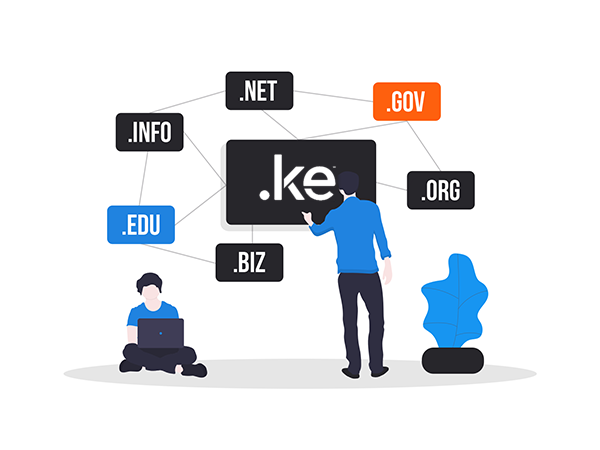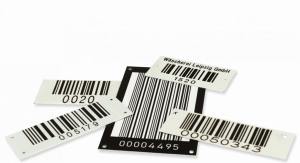Aluminum Fixed Asset Tags
An asset tag is an identification label containing a unique ID of the asset on which it is stuck using a strong adhesive.
The ID is mostly in the form of a serial number. To enhance accuracy, a barcode/qrcode representation of the ID is printed on the tag which can then be read with a barcode scanner and sent to the asset management software. The labels / tags also contain company name and logo. We specialize in anodized Aluminum Tags with acetone-activated or self-sticking adhesive thus ensuring the tags we provide in Kenya are best quality.
Aluminum labels are the ideal asset barcode label or fixed asset tag type for marking and tracking your assets. These Aluminum labels are extremely strong, long lasting, easy to apply and virtually impossible to remove. They come in many sizes and can be printed from 1 Colour (Black on Aluminum ) to 6 Color (6 colours onto Aluminum).
Our photosensitive anodized aluminum barcodes provide the most durable identification. Barcodes are photo-imaged within the anodic layer of aluminum — providing unmatched durability for years of outdoor service.
Aluminum Asset Tags are extremely durable and withstand the harshest environments for indoor and outdoor tracking applications, such as: excellent resistance to chemicals, abrasion and solvents, will withstand exterior exposure in the harshest environments, including extreme cold, heat and UV.
Companies use Aluminum fixed assets tags because fixed assets management is an accounting process that seeks to track fixed assets for the purposes of financial accounting, preventive maintenance, and theft deterrence.

Aluminum Asset Tags
Organizations face a significant challenge to track the location, quantity, condition, maintenance and depreciation status of their fixed assets. A popular approach to tracking fixed assets uses serial numbered fixed Aluminum Asset Tags or fixed Aluminum asset labels, which are labels often with bar codes for easy and accurate reading. Periodically, the owner of the assets can take inventory with a mobile bar code reader and then produce a report.Aluminium asset tags features include:
- Designed for long service.
- Superior resistance to chemicals, abrasion, solvents, extreme temperatures and UV.
- Highly readable crisp graphics on a silver background.
- High-performance adhesives and/or holes for mechanical fixing.
ASSET TAGS PRODUCTS AND SERVICES
- Barcoded asset tags/labels – anodized Aluminum metal tags
- QR code product labels and asset tags
- Self sticking adhesive asset tags
- Acetone activated adhesive asset tags
- Wired/USB barcode scanners
- Wireless barcode scanners
- Asset management software
- Asset software installation and configuration
- Asset tagging/marking services
- Compiling asset register
- Asset verification/audit and reconciliation
Asset Tagging Frequently Asked Questions
What is an asset tag?
An asset tag is simply a label put on an item to uniquely identify it. It comes with a logo in full color or in black and white, a bar code or Qr code and a unique serial number to uniquely identify the asset on which it is fixed on.
Which Assets Require Tagging?
When Are Bar Codes Necessary for Asset Tags?
Bar codes provide error-free, machine-readable (bar code scanners) recording, avoiding manual transcription errors caused by humans. These are valuable – and often necessary – to businesses or educational institutions with large or diversified inventories of physical property that must be monitored, tracked or maintained.
Bar code readers or scanners decode the information in the bar codes and compare them against a database for tracking or maintenance purposes. This provides secure access to a number of records and pieces of information for essential team members. This information can be more readily shared across an organization without the need to copy or scan what could be sensitive documents.
When Should I use Sequential Serial Numbering?
Sometimes, human-readable elements can provide an added layer of functionality to an asset tracking system. Assets using such a numbering system may be deciphered without scanners, or at least more readily identified by personnel for accessing deeper levels of data within a database. Numbering of bar code labels may be sequential or non-sequential, and may start from any number or use any series you specify.
Can the Labels be Easily Peeled Up?
Our asset labels are designed to be extremely durable. When combined with our permanent pressure sensitive adhesive, these labels will last the lifetime of your assets.
How do I fix the asset tags?
Asset tags come with an adhesive at the back. For self-sticking tags you just peel off the paper at the back to expose the active adhesive the apply pressure to fix the tag on the asset. For acetone-activated tags, you peel off the paper at the back then slightly apply acetone to activate the adhesive then apply gentle pressure to fix the tag on an asset.
What is asset register development?
What is asset verification?
Asset verification is the process of making valid the information on assets, for example for property, plant and equipment; confirming the existence, location and condition of the asset. Knowing what assets you have, where they are located, when they were purchased, if they are still in use, etc. is critical to any organization.








